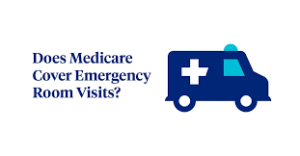
Emergency Coverage: What’s Actually Included?
Emergencies don’t wait. And when they strike, the last thing you want is confusion about what your insurance covers—and what it doesn’t.
From unexpected hospital visits to ambulance rides and ER stays, emergency coverage can be a financial lifesaver—but only if you understand the fine print. So, what exactly is covered in an emergency, and when are you still at risk of surprise bills?
Here’s what you need to know before the next crisis hits.
🚑 What Counts as a Medical Emergency?
Most health insurance plans define an emergency as any sudden, severe illness or injury that poses an immediate risk to your life, health, or a vital body function. Think:
-
Chest pain or suspected heart attack
-
Breathing difficulties
-
Uncontrolled bleeding
-
Severe trauma (e.g., from an accident)
-
Stroke symptoms
-
High fever in infants
In these cases, you’re covered, whether you go to an in-network or out-of-network facility. By law (under the Affordable Care Act), insurers can’t penalize you for going out-of-network in a genuine emergency.
🏥 What Emergency Services Are Usually Covered?
Here’s a breakdown of what’s typically included:
✔️ Emergency Room Visits
You’re usually covered for ER evaluation, treatment, and stabilization. However, you may still be responsible for a copay, coinsurance, or deductible depending on your plan.
✔️ Ambulance Transport
Ground ambulance services are often covered in emergencies—but only if deemed “medically necessary.” Helicopter or air ambulance? Covered less frequently and can lead to massive bills if not in-network.
🧠 Tip: Some insurance plans require the ambulance provider to be in-network for full reimbursement—always check.
✔️ Emergency Surgery
If you need surgery to treat or stabilize a life-threatening condition (e.g., internal bleeding or appendicitis), that’s typically covered under emergency benefits.
✔️ Lab Tests and Imaging
Bloodwork, X-rays, CT scans, and MRIs done in the ER as part of emergency diagnosis are usually included.
✔️ Hospital Admission
If your emergency leads to a hospital stay, your plan should cover inpatient care, but out-of-network rules may shift once you’re admitted. Watch for this!
🧾 What’s Not Always Covered?
Emergency coverage doesn’t mean a blank check. Here are things that might catch you off guard:
❌ Non-Emergency Use of the ER
If you visit the ER for a sore throat or minor injury and it’s not considered an emergency, you could pay the full cost, especially if it’s out of network.
❌ Observation vs. Admission
Sometimes, hospitals place patients under “observation status” instead of formally admitting them. This can affect how much your insurer pays—and what you owe.
❌ Out-of-Network Specialists
Even if the ER is in-network, the radiologist or surgeon who sees you may not be. That’s how surprise bills happen.
🧠 Good news: Federal “No Surprises” laws are helping limit these costs—but it’s still smart to follow up.
🔍 What to Ask After an Emergency
Once you’re stable, here’s what to clarify:
-
Was I officially admitted or placed under observation?
-
Was everyone who treated me in-network?
-
Will follow-up care (tests, specialists) be covered?
💳 Your Cost: What Will You Owe?
Even when covered, you may still owe:
-
ER Copay – A flat fee (e.g., $100–$500) for the visit
-
Coinsurance – A percentage of the bill (e.g., 20%) after your deductible
-
Deductible – The amount you must pay before insurance kicks in
Understanding these upfront helps you plan and negotiate bills later.
📲 Pro Tips for Better Emergency Coverage
-
Carry your insurance card at all times
-
Know your nearest in-network hospital, especially if traveling
-
Add your insurer’s nurse hotline to your phone—some plans offer 24/7 triage
-
Appeal denied claims—especially if care was urgent and unavoidable
-
Consider supplemental coverage, like accident or critical illness plans, for extra protection
🔚 Bottom Line
Emergency coverage can protect you in life’s worst moments—but only if you understand the limits and loopholes.
Don’t wait until you’re in an ambulance to figure out what’s covered. Take time now to review your plan, ask questions, and prepare for the unexpected. Because in an emergency, every second—and every dollar—counts.